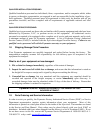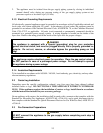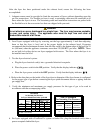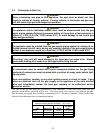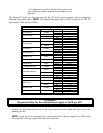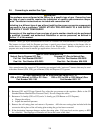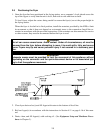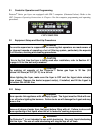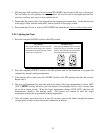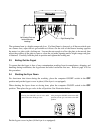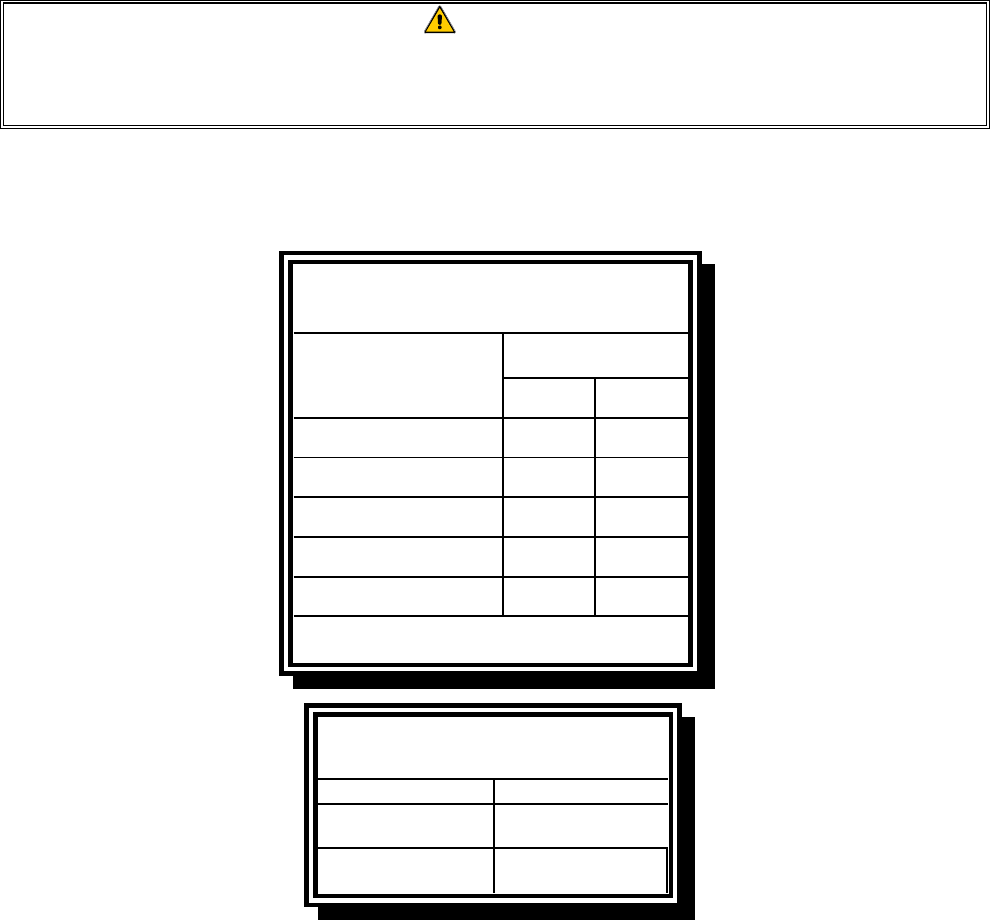
2-7
When using thread compound, use very small amounts on male threads only. Use a pipe thread
compound that is not affected by the chemical action of LP gases (Loctite™ PST56765 Sealant
is one such compound). DO NOT apply compound to the first two threads. Doing so may allow
some of the compound to enter the gas stream, resulting in clogging of burner orifices and/or the
control valve.
2. Open the gas supply to the fryer and check all piping, fittings, and gas connections for leaks. A
soap solution should be used for this purpose.
3. Close the fryer drain valve and fill the frypot with water and boil-out solution to the bottom
OIL LEVEL line at the rear of the frypot. Light the fryer and perform the boil-out procedures
that are described in the “Lighting Instructions” and “Boiling Out the Frypot” topics found in
Chapter 3 of this manual.
DANGER
“Dry-firing” your unit will cause damage to the frypot and can cause a fire. Always
ensure that melted shortening, cooking oil, or water is in the frypot before firing your
unit.
4. The burner manifold pressure should be checked at this time by the local gas company or an
authorized service agent. The tables below and on the following page list the burner manifold
gas pressures for the various gas types that can be used with this equipment.
Gas
Single
Vat
Dual
Vat
Natural Gas Lacq
(G20) under 20 mbar
77
Natural Gas Groningue *
(G25) under 25 mbar
10 10
Natural Gas Groningue
(G25) under 20 mbar
10 10
Butane
(G30) at 28/30 or 50 mbar
17 17
Propane
(G31) under 37 or 50 mbar
20 20
CE Standard
Burner Manifold Gas Pressures
for Fryers Manufactured After April 1999
Pressure (mbar)
* Belgian G25 = 7,0 mbar (single or dual)
Non-CE Standard
Burner Manifold Gas Pressures
Gas Pressure
Natural
3" W.C.
0.73 kPa
Propane
8.25" W.C.
2.5 kPa
5. Check the programmed temperature thermostat setting. (Refer to chapter 4 CM7 Computer
Instructions) for the setpoint programming instructions for your particular controller.)



